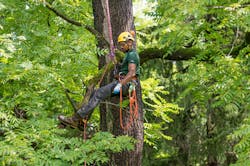Although “Taylorism” brought forth some good ideas from the production aspect of work, it created or at least strengthened, the divide between the worker and management. An extreme simplification of the Taylor view was that the worker wasn’t smart enough and, therefore, should play no role in the planning of the work. Heinrich’s work added to this by, in essence, blaming workers for their “behavior” and creating an oversimplification of the relationship between behaviors and outcomes. This led to the graphic of the safety pyramid, or triangle, which attempted to explain the relationship between behaviors, low-severity, and high-severity incidents.
The fundamental flaw with the safety pyramid concept is that it assumes that the same underlying behaviors cause low-, medium- and high-severity injuries or fatalities. This faulty thinking led to a connection between the severity of incidents; that is, the more lower severity incidents occurred, the greater likelihood of a severe one or fatality. The data just didn’t support this connection.
Reflecting on the History of Safety
As we moved forward, other research continued to shape our view of safety. For example, B.F. Skinner’s scientific view of human behavior showed how employees’ actions are shaped by being rewarded for wanted behavior and punished in some capacity for unwanted actions. In the 1970s, we began to target the behavior of the employee. It made sense at some level—if we can change the behavior of the individual employee, we can reduce the incidents. Change the shape of the triangle at the bottom, and then change the shape at the top. Focus on the employee, and all incidents can be prevented. We all believed it to be true, and it seemed to reduce incidents as we tracked and recorded them. The logic error proven through testing this theory was that “behaviors” are not “beliefs.” Behaviors are learned because of specific conditions. If a worker’s conditions change, so do their behaviors.
Tom Krause and others began to tackle the inconsistency with the safety pyramid. They found that the safety triangle is not predictive. One of the key things they found relates to a topic many of us in the UVM space are spending many resources on—reducing serious injuries and fatalities (SIFs). Their research indicated that reducing the number of lower severity incidents (the bottom of the triangle) does not correlate to reducing SIFs (the top of the triangle). There is no relationship between the bottom of the triangle and the top.
Taking a New View
Next, we come to cognitive dissonance around the key concepts of how we practice safety in the field. We see an overall reduction in recordable incidents, but we’re not noticing a similar reduction in SIFs. At this point we start to look at things differently. We also start hearing from different researchers and thought leaders who changed the shape of safety including David Woods, Erik Hollnagel, Sydney Dekker, Todd Conklin and Shane Bush. We begin talking about capacity and resilience instead of just compliance and OSHA recordability.
When we speak of resiliency, we speak of the ability to fail safely. When we focus on capacity, we focus on adding meaningful defenses to the work environment to create safer processes—not safer people. Workers want to be safe. In the “new view” of safety, we find ways to create conditions in which they can use their expertise to achieve this goal. Workers will make mistakes—all humans do. However, a mistake should never cost someone their life. A resilient system with capacity for error allows workers to be human and still go home safely at the end of the day.
For successful application of this approach, it is vital to remember workers are the experts in their tasks and conditions. If we only focus on reprimanding the workers when something doesn’t go to plan, we lose the opportunity to learn from the experts, and ultimately improve the system. If we develop systems separated from those diligently working within them, we create safety on an island, and our solutions prove fruitless. Safety is a support function of operations. Safer work environments will be created only with a thorough understanding of the conditions surrounding the work, and the interconnected relationship between those conditions, worker behaviors and outcomes.
Timothy Walsh ([email protected]) is president of the Utility Arborist Association. He is also the vice president of health and safety for the Davey Tree Expert Company.
About the Author
Timothy Walsh
Timothy Walsh ([email protected]) is president of the Utility Arborist Association. He is also the vice president of health and safety for the Davey Tree Expert Company.
.
